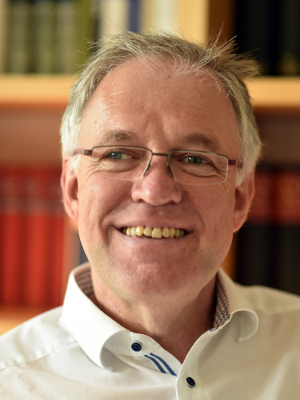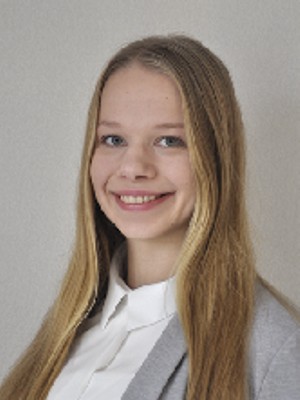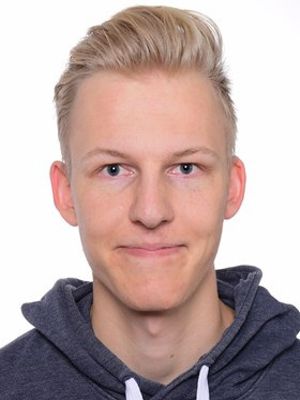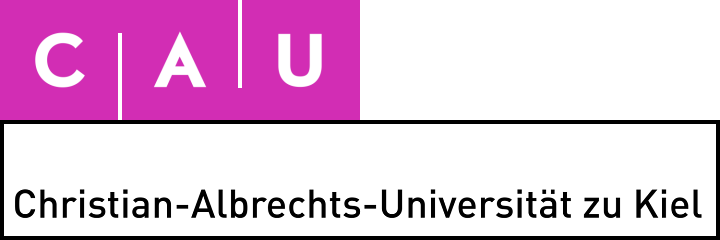Project A9 - Surface Acoustic Wave Magnetic Field Sensors

In the second funding phase of CRC 1261, Project A9 was launched following initial investigations in Project A3 regarding Love wave surface acoustic wave (SAW) sensors in the first funding period. A9 comprises two parts: (1) SAW sensors using piezoelectric single crystals substrates (SC SAW) and (2) those employing AlScN layers on Si wafers (thin-film SAW). Both parts share commonalities in material selection and processing methods.
In the current second founding period, substantial progress has been made in improving the limit of detection (LOD) with SC SAW sensors, notably through the use of exchange-biased magnetostrictive multilayers which reduce noise without compromising sensitivity. Achieved LODs stand at 28 pT/Hz1/2 at 10 Hz and 10 pT/Hz1/2 at 100 Hz. Ferroelectric crystals are being investigated to further enhance sensor performance, and special exchange-biased magnetostrictive layers should allow bias-free operation.
The growth of the AlScN acoustic layer on various substrates was investigated, and its quality and acoustic performance were improved through the utilization of an AlN seed layer. Initial measurements demonstrate a sensitivity of 1200°/mT and a LOD of 350 pT/Hz1/2 at 10 Hz. Design studies for layer stacks and interdigital transducer (IDT) apertures were also conducted. In the upcoming phase, the primary objectives are to further enhance sensitivity and LOD, e.g. by using the magnetostrictive layer systems investigated in the case of SC SAW sensors. The use of phononic crystals in the SAW delay line to reduce noise and improve performance is being explored. Methods for reducing substrate material to address substrate losses are also under investigation. Additionally, the study of piezo-acoustic coupling properties in ferroelectric AlScN bi-layers and the exploration of the growth of AlScN with inclined c-axes on sapphire to amplify shear wave amplitudes are planned. Collaboration with A9 remains crucial for ensuring accurate assessments throughout this research.
Involved Researchers
| Person |
Role |
 |
Prof. Dr. Eckhard Quandt
Materials Science
Inorganic Functional Materials |
Project lead |
 |
Dr. Fabian Lofink
Microsystem Technology
Fraunhofer Institute |
Project lead |
 |
M.Sc. Jana Meyer
Microsystem Technology
Fraunhofer Institute |
Doctoral researcher |
 |
M.Sc. Felix Weisheit
Materials Science
Multicomponent Materials |
Doctoral researcher |
 |
M.Sc. Eline Reger
Microsystem Technology
Fraunhofer Institute |
Doctoral researcher |
Role within the Collaborative Research Centre
Project A9 participates in the focus groups F1 - Magnetic Layers, F3 - Comparison of Sensor Concepts and
F4 - Magnetoelectric Sensors. Close cooperation is planned with the following partners:
| Collaborations |
| A1 (Magnetostrictive Multilayers for Magnetoelectric Sensors) |
Application of advanced magnetic multilayers to SAW sensors. |
| A6 (Microstructure and Structural Change of
Magnetoelectric Sensors) |
Chemical and structural analysis of AlScN with focus on studies of bi-layers and inclined
AlScN grown with tilted c-axis, synchrotron measurements on AlScN on sapphire. |
| A8 (Modelling of Magnetoelectric Sensors) |
Modeling of SAW sensor parameters and designs, phononic crystal design. |
| A10 (Magnetic Noise of Magnetoelectric Sensors) |
Numerical studies on noise and phononic crystals (advanced shapes), in operando time-
resolved MOKE measurements. |
| B1 (Sensor Noise Performance and Analogue System Design) |
Analog electronics, noise floor characterization, LOD measurements. |
| B12 (Bioinspired Nanocomposites for Early Detection
of Complications in Gastrointestinal Surgery), B13 (Magnetoelectric 3D Mapping in Gastrointestinal Diagnostics) |
Providing SAW sensors and measurement equipment/ knowledge to the application
projects. |
| Z1 (MEMS Magnetoelectric Sensor Fabrication) |
Support in SAW sensor fabrication. |
| Z2 (Magnetoelectric Sensor Characterization) |
Support with sensor characterization. |
Project-related Publications
|
M. Samadi, J. M. Meyer, E. Spetzler, B. Spetzler, J. McCord, F. Lofink, M. Gerken: Modeling of High-Sensitivity SAW Magnetic Field Sensors with Au-SiO2 Phononic Crystals, Advanced Sensor Research, vol. 4(5), 2500008, 2025. |
|
H. Wolframm, F. Weisheit, E.Quandt, M. Höft: Dedicated SAW Oscillator for Sensing Applications, IEEE International Instrumentation and Measurement Technology Conference , conf. proceedings, 2024. |
|
M. Samadi, J. Schmalz, J. M. Meyer, F. Lofink, M. Gerken: Phononic-Crystal-Based SAW Magnetic-Field Sensors, SMicromachines, 14(11), 2130, 2023. |
|
M. F. Niekiel, J. M. Meyer, H. Lewitz, A. Kittmann, M. A. Nowak, F. Lofink, D. Meyners, J.-H. Zollondz: What MEMS Research and Development Can Learn from a Production Environment, Sensors, Dec., 23(12), 5549, 2023. |
|
V. Schell, E. Spetzler, N. Wolff, L.Bumke, L. Kienle, J. McCord, E. Quandt, D. Meyners: Exchange Biased Surface Acoustic Wave Magnetic Field Sensors, Scientific Reports, vol. 13, no. 8446, 2023. |
|
H. Wolframm, V. Schell, E. Quandt, M. Höft, A. Bahr: High Sensitivity Magnetoelastic Surface Acoustic Wave (SAW) Magnetic Field Sensors, Proc. SPIE, Spintronics XV, 1220505, 2022. |
|
S. Moench, J. M. Meyer, A. Žukauskaitė, V. Lebedev, S. Fichtner, J. Su, F. Niekiel, T. Giese, L. Thormählen, E. Quandt, F. Lofink: AlScN-Based SAW Magnetic Field Sensor for Isolated Closed-Loop Hysteretic Current Control of Switched-Mode Power Converters, IEEE Sensors Letters, vol. 6, no. 10, pp. 1-4, 2022. |
|
N. Wolff, M. R. Islam, L. Kirste, S. Fichtner, F. Lofink, A. Žukauskaitė, L. Kienle: Al1−xScxN Thin Films at High Temperatures: Sc-Dependent Instability and Anomalous Thermal Expansion, Micromachines, no. 13, issue 8 , 01282, 2022. |
|
J. Su , S. Fichtner , M. Zubair Ghori , N. Wolff , M. R. Islam , A. Lotnyk , D. Kaden , F. Niekiel, L. Kienle, B. Wagner, F. Lofink: Growth of Highly c-Axis Oriented AlScN Films on Commercial Substrates, Micromachines , no. 13, issue 5, pp. 783, 2022. |
|
C. Müller, P. Durdaut, R. B. Holländer, A. Kittmann, V. Schell, D. Meyners, M. Höft, E. Quandt, J. McCord: Imaging of Love Waves and Their Interaction with Magnetic Domain Walls in Magnetoelectric Magnetic Field Sensors, Advanced Electronic Materials, 2200033, 2022. |
|
J. M. Meyer, V. Schell, J. Su, S. Fichtner, E. Yarar, F. Niekiel, T. Giese, A. Kittmann, L. Thormählen, V. Lebedev, S. Moench, A. Žukauskaitė, E. Quandt, F. Lofink: Thin-Film-Based SAW Magnetic Field Sensors, Sensors, vol. 21, no. 24, 8166, 2021. |
|
L. Thormählen, D. Seidler, V. Schell, F. Munnik, J. McCord, D. Meyners: Sputter Deposited Magnetostrictive Layers for SAW Magnetic Field Sensors, Sensors, vol. 21, issue 24, 8386, 2021. |
|
V. Schell, P. Durdaut, C. Müller, A. Kittmann , M. Yalaz, A. Bahr, D. Meyners, M. Höft, J. McCord, E. Quandt: Sensing Small Magnetic Fields with Surface Acoustic Waves, SAW Symposium 2021, Dresden, Germany, October 14th - 15th, 2021. |
|
P. Durdaut, C. Müller, A. Kittmann, V. Schell, A. Bahr, E. Quandt, R. Knöchel, M. Höft, J. McCord: Phase Noise of SAW Delay Line Magnetic Field Sensors, Sensors, vol. 21, issue 16, 5631, 2021. |
|
D. A. Bas, P. J. Shah, A. Matyushov, M. Popov, V. Schell, R. C. Budhani, G. Srinivasan, E. Quandt, N. Sun, M. R. Page: Acoustically Driven Ferromagnetic Resonance in Diverse Ferromagnetic Thin Films, IEEE Transactions on Magnetics, vol. 57, no. 2, 2021. |
|
X. Liang, A. Matyushov, P. Hayes, V. Schell, C. Dong, H. Chen, Y. He, A. Will-Cole, E. Quandt, P. Martins, J. McCord, M. Medarde, S. Lanceros-Méndez, S. van Dijken, N. X. Sun, J. Sort: Roadmap on Magnetoelectric Materials and Devices, IEEE Transactions on Magnetics, vol. 57, issue 8, 9446997, 2021. |
|
M.R. Islam, N. Wolff, M. Yassine, G. Schönweger, B. Christian, H. Kohlstedt, O. Ambacher, F. Lofink, L. Kienle, S. Fichtner: On the Exceptional Temperature Stability of Ferroelectric Al1-xScxN Thin Films, Applied Physics Letters, vol. 118, issue 23, 232905, 2021. |
|
N. Wolff, S. Fichtner, B. Haas, M.R. Islam, F. Niekiel, M. Kessel, O. Ambacher, C. Koch, B. Wagner, F. Lofink, L. Kienle: Atomic Scale Confirmation of Ferroelectric Polarization Inversion in Wurtzite-Type AlScN, Journal of Applied Physics, vol. 129, issue 3, 034103, 2021. |
|
J. Su, F. Niekiel, S. Fichtner, L. Thormaehlen, C. Kirchhof, D. Meyners, E. Quandt, B. Wagner, F. Lofink: AlScN-Based MEMS Magnetoelectric Sensor, Applied Physics Letters, vol. 117, issue 13, 132903, 2020. |










